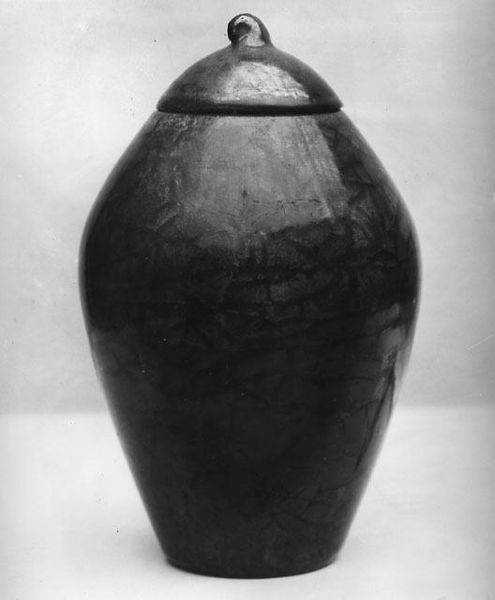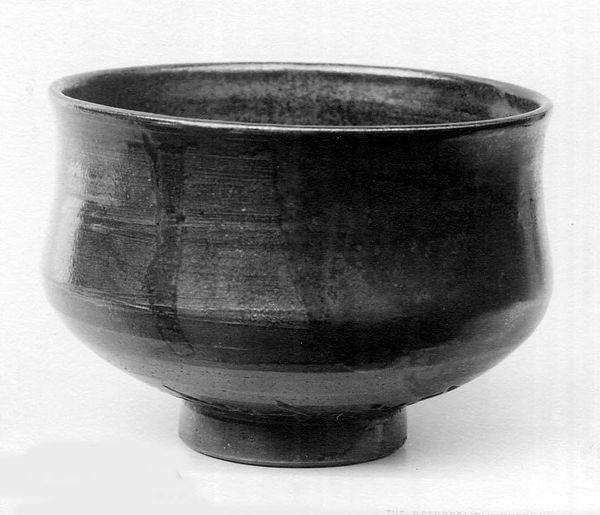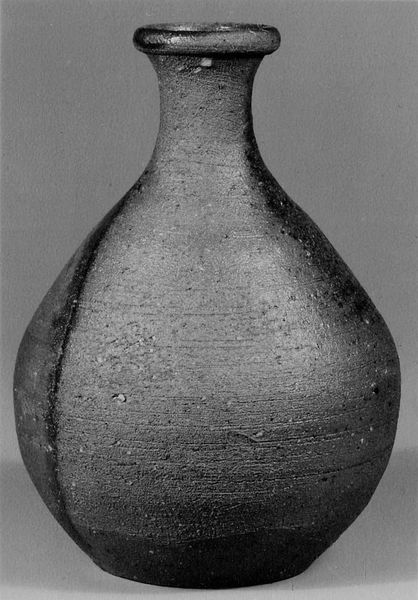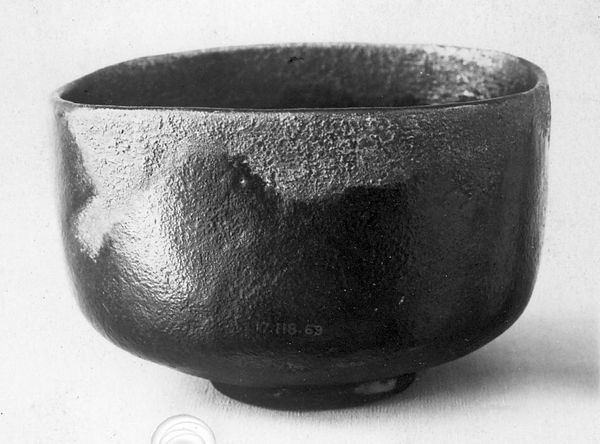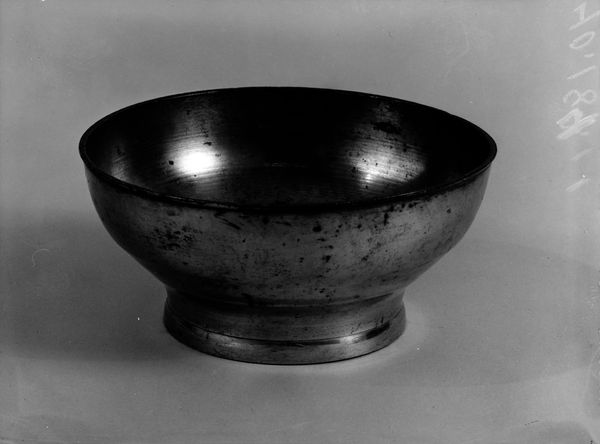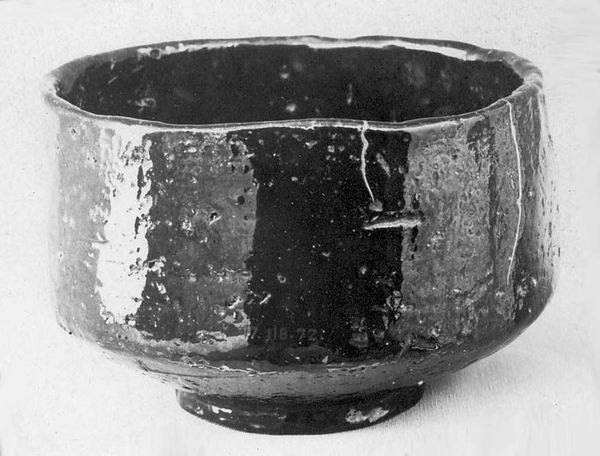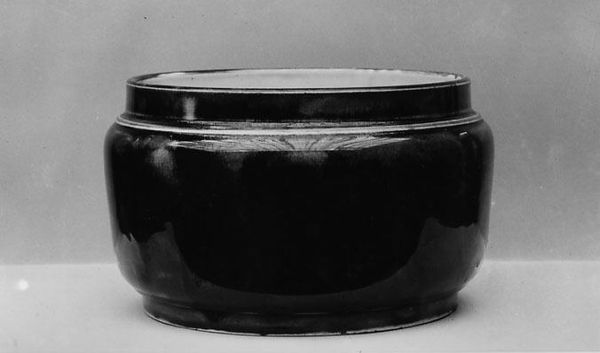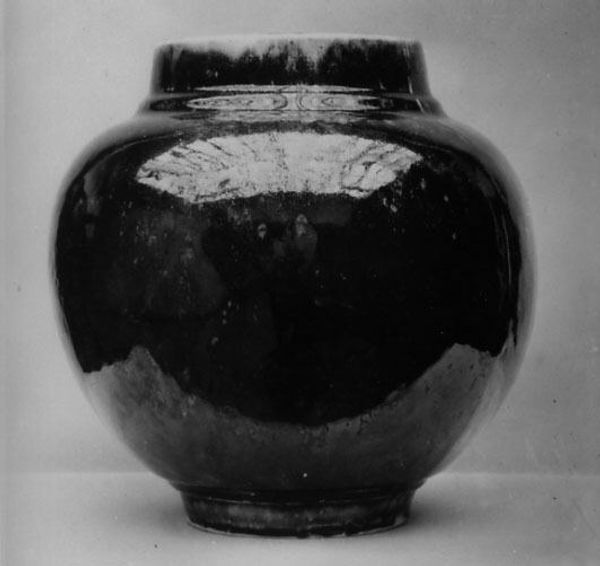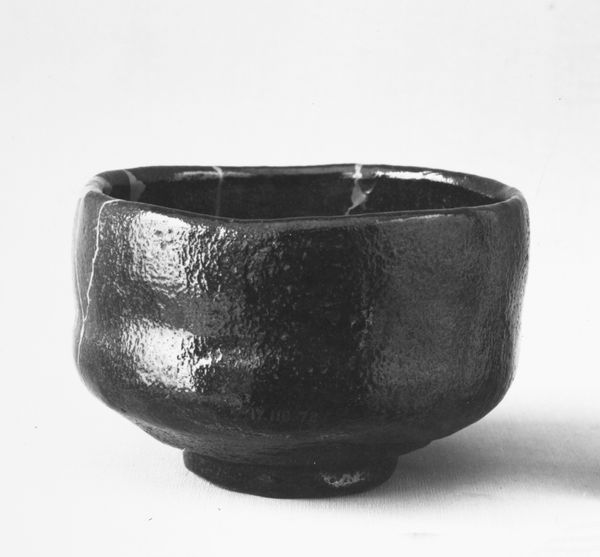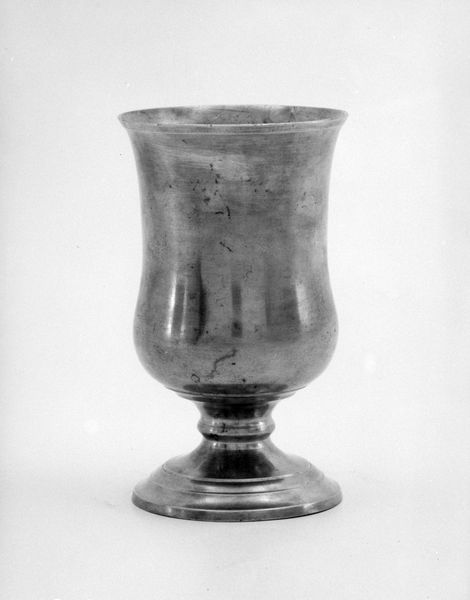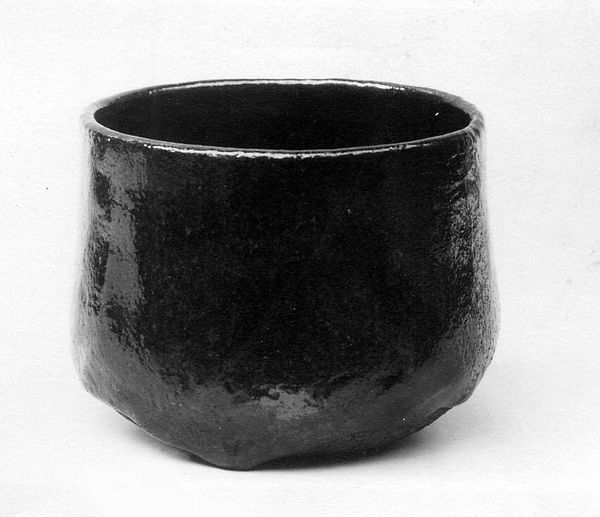
ceramic, sculpture
#
sculpture
#
asian-art
#
ceramic
#
sculpture
#
monochrome
#
monochrome
Dimensions: H. 4 1/4 in. (10.8 cm)
Copyright: Public Domain
Editor: Here we have a ceramic Tea Jar, likely crafted between 1310 and 1330 by Tōshiro, residing here at the Metropolitan Museum of Art. Its simple form and monochromatic palette create a wonderfully somber effect. What initially captures your attention when you view this piece? Curator: Well, darling, beyond the jar’s rather stout silhouette, I can’t help but feel this profound sense of quietude, almost monastic. It’s a whisper of wabi-sabi, a reverence for imperfection and transience, don’t you think? Like a perfectly imperfect haiku. Tell me, does the monochrome, the sheer lack of ostentation, amplify that feeling for you? Editor: Absolutely. It does invite a closer inspection of the form. Does the material, the specific type of ceramic, suggest anything about its origins or function? Curator: Indeed. Considering the period, this probably echoes a lineage tied to Chinese ceramic traditions impacting Japanese aesthetics at the time. And while we call it a "tea jar," remember, darling, it’s less about mass consumption, more about ritual. It likely held precious tea leaves for ceremonial use, laden with spiritual significance. Each curve and contour meticulously shaped, intended to guide a mindful interaction. Isn't it incredible how something so simple can evoke so much? Editor: It is! I hadn’t considered the meditative aspect of the object itself. This really underscores how intertwined art and culture truly are. Thanks for sharing your perspective! Curator: The pleasure's all mine, my dear! Sometimes, the quietest objects have the loudest stories to tell. Remember to listen.
Comments
No comments
Be the first to comment and join the conversation on the ultimate creative platform.
